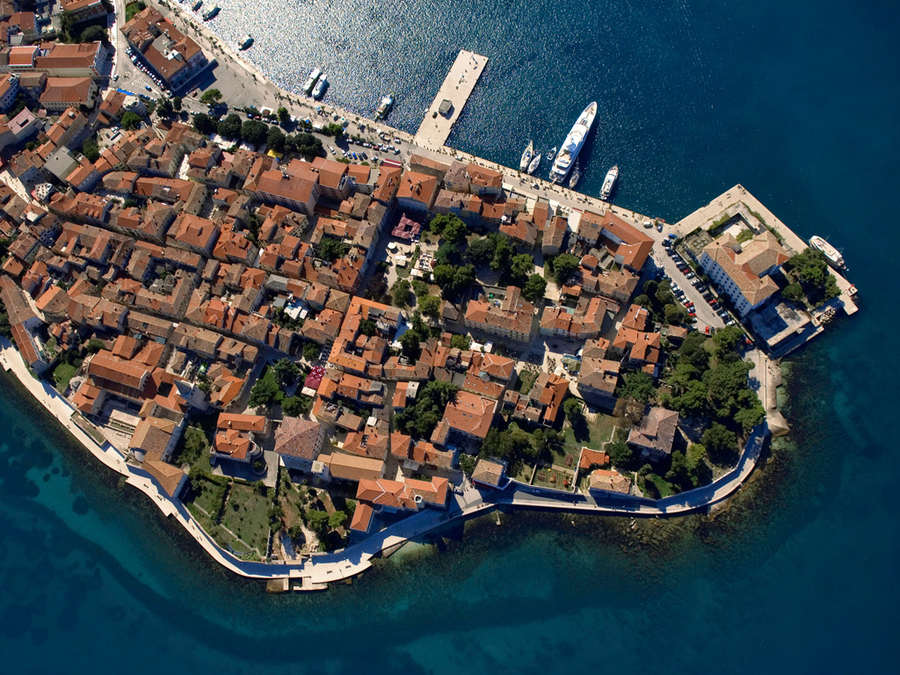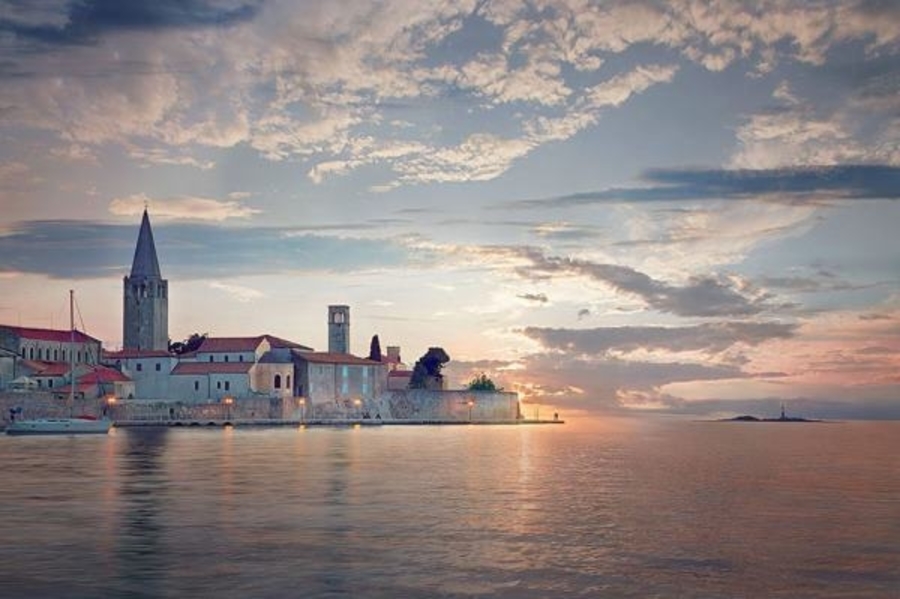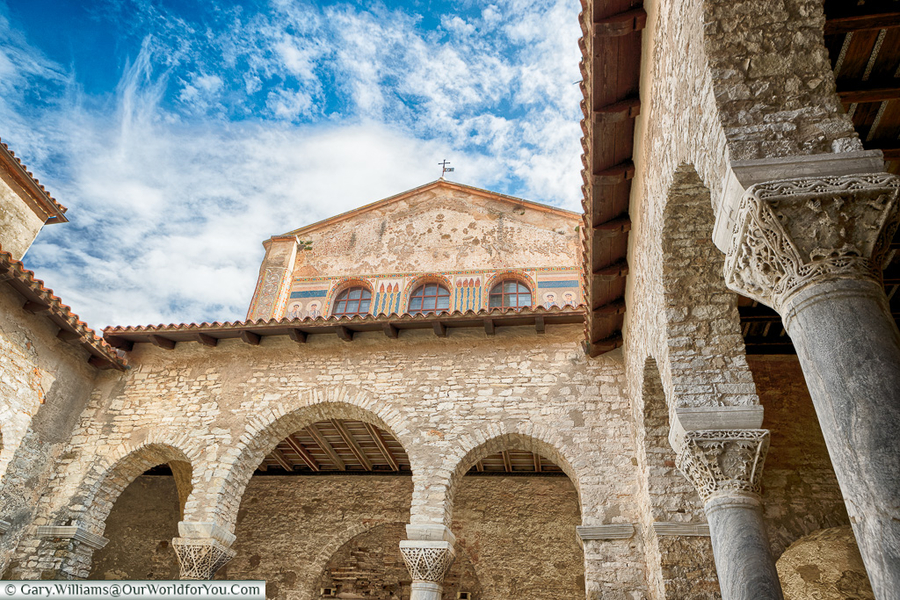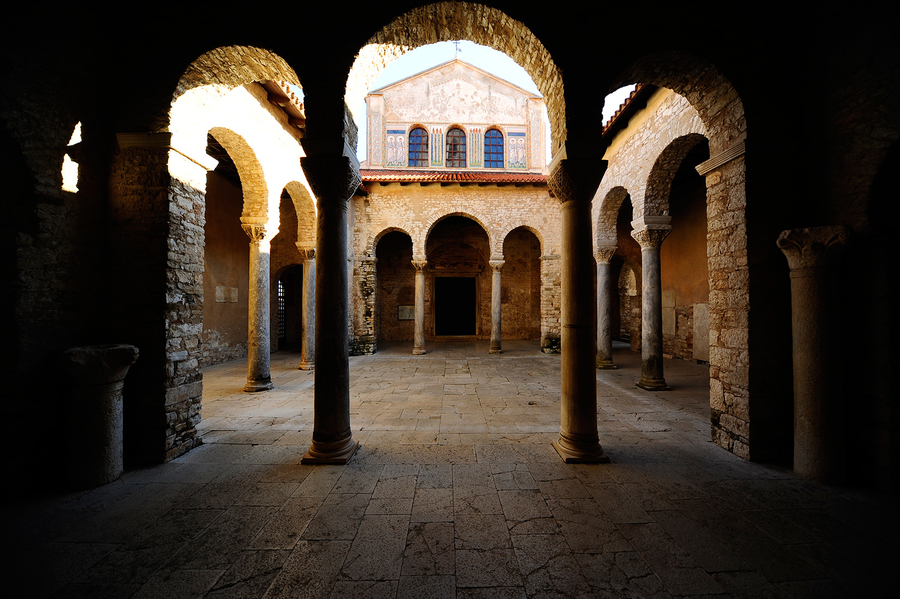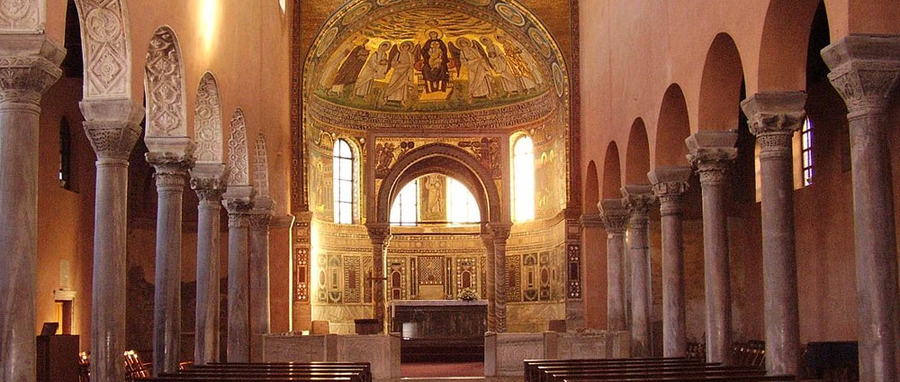Hello guys, we’re back with our UNESCO adventure!
If you have been following us, you know we’ve covered Plitvice lakes ( link ), Split ( link ), and Dubrovnik ( link ). Following the chronological order of listing Croatian UNESCO sites, we are visiting Istria Porec.
The Istrian peninsula is located in the northwest of Croatia, between the Gulf of Trieste and Kvarner Gulf. It is the largest peninsula in Adriatic shared between Croatia, Slovenia, and Italy. Istria is a well-known destination among tourists famous for its wine roads, divine olive oil, hilltop villages and great food. Istrian tourism dates back to the Romans when the amphitheater was built in Pula, which attracted visitors even then.
One of the most prominent Istria tourist destinations today is the city of Porec. Located on the Adriatic coast, western Istria, and protected from the sea by a small island of Sv. Nikola ( Saint Nicholas ) it has been an important center for almost 2000 years. During the 2nd century BC, Romans built a Castrum ( link ) on a tiny peninsula where the town center is currently, and gradually it became a city in 1st century AD and was a part of a Roman colony, Colonia Iulia Parentium. Many governed the city since, but Porec remained one of the most attractive tourist locations of this area. Mainly due to its location, very specific small center on a small peninsula and great history and architecture that are a witness of ages.
Porec center is dominated by one building that stands out The Euphrasian Basilica. Cathedral complex of the Euphrasius basilica has been the center of spirituality and faith in Porec and surrounding area for centuries. It was built in early Christian and Byzantine architecture and is a world-class artistic expression. It remained almost intact since the time of Justinian and has deserved to be included on the UNESCO World Heritage List. On 6 December 1997, the United Nations Organisation through UNESCO registered the Episcopal complex of the Euphrasian basilica into the World Heritage list on the basis of its state of preservation and beauty. Precisely for this reason, the city and the entire region have become an important destination of Croatian tourism. The Euphrasian basilica has, for the most part, retained its original shape, but accidents, fires, and earthquakes have altered a few details. Since it is the third church to be built on the same site, it conceals previous buildings, for example, the great floor mosaic of the previous basilica from the 5th century. The earliest basilica was dedicated to Saint Maurus of Parentium ( an early Christianity bishop of the area ) and dates back to the second half of the 4th century. The floor mosaic from its oratory, originally part of a large Roman house, is still preserved in the church garden. The present basilica, dedicated to Mary, was built in the sixth century during the period of Bishop Euphrasius. It was built from 553 on the site of the older basilica that had become dilapidated. For the construction, parts of the former church were used and the marble blocks were imported from the coast of the Sea of Marmara. The wall mosaics were executed by Byzantine masters and the floor mosaics by local experts. The construction took about ten years. Euphrasius, holding the church in his arms, is represented on one of the mosaics on the apse, next to St. Maurus. The Euphrasian basilica dating from the sixth century is the most significant edifice making Porec recognizable in the world. It is the pride of the people who live here and a meeting place of many people who drop in. Upon the first encounter with the Episcopal complex of the Euphrasian Basilica, one is usually left very impressed and astonished.
A novelty of the Euphrasian Basilica is that rather than being enclosed by a straight wall, as all sacred buildings were up to that time, it makes use of the length of the apse of the central nave, built in the shape of a polygon from the outside, whilst the two aisles end in smaller semicircular apses, hollowed into the wall. Thus the Euphrasian Basilica is the earliest example of a triple-apse church in Western Europe. The atrium is a typical example of Byzantine architecture, as are the columns, the tiles on the altar rail and all the abundant mosaics. Most impressive is the representation of Christ with the apostles and beneath it a frieze of 13 medallions with a picture of Christ as the Lamb in the center, surrounded by 12 medallions depicting various martyrs. The church houses also holy objects and other artworks from the Palaeo-Christian, Byzantine, and Middle Ages periods. A votive chapel, next to the sacristy, holds the relics of Saint Maurus and Saint Eleutherius.
The most striking feature of the basilica is its mosaics, dating from the 6th century. The mosaics in the triumphal arch over the apse represent Christ; holding an opened book with the text “Ego sum Lux vera” (I am the true light) with the Apostles, each with their attribute, The arch below contains mosaic medallions with the Lamb of God and portraits of twelve female martyrs. The vault over the apse is decorated with mosaics with Mary and Child, sitting on the Heavenly throne, under a wreath held by a hand – symbol of God the Father. This is the only surviving depiction of the Mother of God in an early-Christian western basilica. She is flanked by angels, Bishop Euphrasius, holding the model of the church; also local saints are depicted, including St. Maurus, the first bishop of Porec and the Istrian diocese, and the archdeacon Claudius. The central mosaics between the windows of the apse represent the Annunciation and the Visitation. In the Annunciation mosaic, an angel raises his hand to indicate a message. Between these two large mosaics are smaller mosaics depicting the Young Christ with halo, and two martyrs with their martyr crown. In the northern apse, these are probably Cosmas and Damian, in the south apse Ursus (or another Bishop of Ravenna), and Severus.
In 313 Emperor Constantine granted Christians freedom to worship in the Roman Empire and soon the Christians in Porec expanded the dining room of the residence of the Bishop and Martyr Mauro and thereby opened the first public church. The first basilica was built at this site in the second half of the fourth century (380s) and the mortal remains of Bishop Mauro and the other martyrs were officially translated from the early Christian cemetery, which was outside the city walls, into the central altar of the basilica and the bishops palace. In 1847 a stone slab was found that bears witness to St. Maurus and to the translation of his relics to the first basilica in the fourth century. In 1247 bishop Pagano of Porec had a large marble sarcophagus made in which the relics of Sts. Mauro and Eleutherius were kept. In the beginning, this sarcophagus was located behind the altar of Sts. Mavro and Eleutherius in the right (southern) nave. Now it is located in the Cella Trichora. In the war between Venice and Genoa in 1354, the relics of Sts. Mauro and Eleutherius were taken to Genoa as spoils of war. In 1508 Bishop Tasso received small bone particles of Sts. Mauro and leutherius from Genoa and commissioned that a reliquary is made for them. In 1934 Genoa solemnly returned the relics of the holy martyrs of Porec. They are no longer kept in the sarcophagus but in the main altar. On 21 November, for the Feast of St. Mauro, the relics are displayed outside for faithful veneration. In the Middle Ages, bell towers started to appear next to churches. The bell tower in the Euphrasian basilica was built on the western side of the baptistery in 1522. It is 35 meters high and is a charming Belvedere or viewing place.
Porec is a beautiful location to visit, full of history, culture and unique experiences.
And this particular site is one of a kind in the entire world, which is a feature that puts it on everyone’s “Must see” list. Head to Croatia this year and visit this stunning architectural and cultural beauty.
We finish our number four UNESCO journey here and hope you will stay tuned for the upcoming adventure from this list.
Keep safe and stay active!



